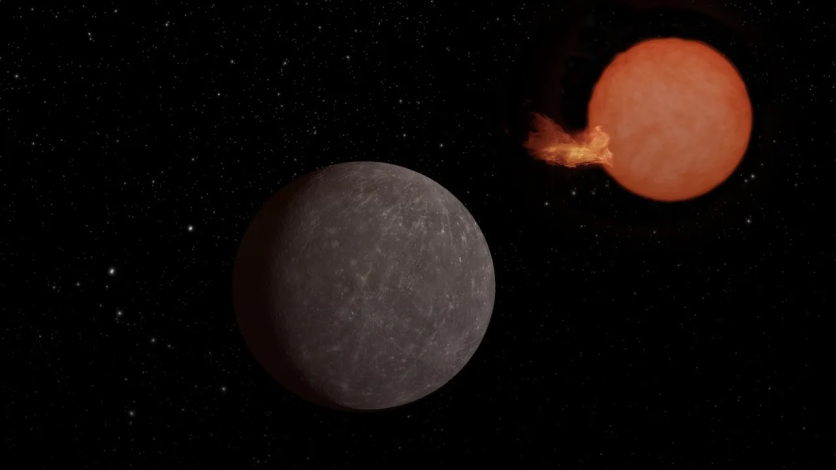Astronomers have made an "ultra-cool" and "spectacular" discovery after identifying an Earth-sized exoplanet, SPECULOOS-3 b, orbiting a red dwarf star within our galaxy.

An Earth-like Planet Orbits an Ultra-Cool Red Dwarf Star
NASA explains that the ultra-cool red dwarf star is a common type within our Milky Way galaxy and represents a significant portion of stellar bodies, comprising more than 70% of all stars.
Unlike our Sun, which radiates warmth and brightness, these red dwarfs emit a cooler, dimmer light that substantially influences their orbiting planets. These stars also boast an extended lifespan lasting over 100 billion years, presenting intriguing possibilities for harboring life over extended periods.
An international team of astronomers, leveraging robotic telescopes deployed worldwide, recently discovered SPECULOOS-3 b. This Earth-sized planet orbits its host star approximately 55 light-years away from Earth—an astonishing proximity considering the vast cosmic distances, according to NASA.
A unique aspect of SPECULOOS-3 b is its tidally locked nature, akin to our Moon's relationship with Earth, where one side is perpetually illuminated. At the same time, the other remains enshrouded in perpetual darkness.
Ultra-cool dwarf stars, like the one hosting SPECULOOS-3 b, are prolific in our galactic neighborhood yet remain largely unexplored due to their faint luminosity. To unveil the mysteries harbored by these distant stars and their planetary systems, the SPECULOOS (Search for Planets EClipsing ULtra-cOOl Stars) project was conceived.
Spearheaded by Michael Gillon from the University of Liège in Belgium, this initiative aimed to systematically observe and study nearby ultra-cool dwarf stars using a dedicated network of advanced telescopes.
Read Also : NASA James Webb Space Telescope May Have Found Atmosphere on 'Too Hot to be Habitable' Exoplanet
Cooler than the Sun
The star associated with SPECULOOS-3 b exhibits a remarkably cooler temperature than our Sun, hovering around 4,760 degrees Fahrenheit (2,627 degrees Celsius). Despite its faintness, this star bombards its orbiting planet with intense radiation, suggesting the likelihood of an atmosphere-free environment.
Catherine Clark, a co-author of the discovery paper and a researcher at NASA's Jet Propulsion Laboratory, emphasized the challenges posed by observing such distant celestial bodies due to their dimness, further highlighting the significance of this find.
NASA further explains that SPECULOOS-3 b orbits a star slightly larger than Jupiter but significantly more massive. This close proximity results in the planet receiving approximately 16 times the solar energy received by Earth, profoundly impacting its surface conditions and climate dynamics.
Looking ahead, astronomers plan to conduct follow-up observations using the James Webb Space Telescope to gain deeper insights into SPECULOOS-3 b's atmospheric composition and surface characteristics.
''We're making great strides in our study of planets orbiting other stars. We have now reached the stage where we can detect and study Earth-sized exoplanets in detail. The next step will be to determine whether any of them are habitable, or even inhabited,'' Steve B. Howell, a planet discoverer at NASA Ames Research Center in Silicon Valley, said in an official statement.
The findings of the team were published in the journal Nature Astronomy.
Related Article : NASA James Webb Achieves One of Its First Major Science Goals After Probing the Atmosphere of TRAPPIST Planet

ⓒ 2025 TECHTIMES.com All rights reserved. Do not reproduce without permission.




